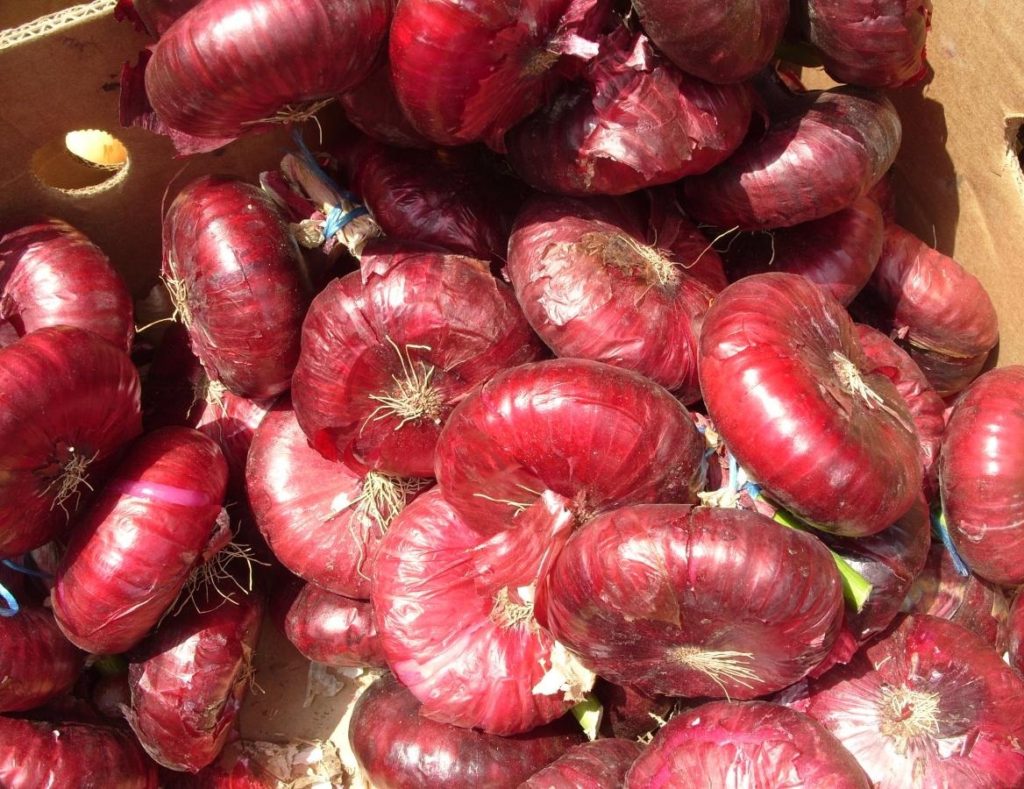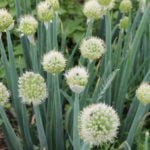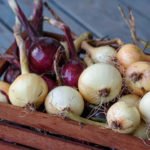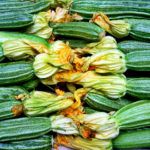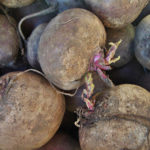Onions as a cultivated plant have accompanied humans since ancient times. In ancient Egypt, Greece, Rome, and the Middle East, they were revered not only as food and medicinal plants, but also as a necessary element in religious rituals, mummification, and burial. For example, bows were thought to be essential food for kings in the afterlife.
The Latin name of the genus Allium comes from the Celtic “all” – burning and is associated with the burning taste characteristic of onions. This onion began to grow in 4000 years BC.
According to the ideas of the ancients, multi-layered light bulbs reminded of the structure of the universe. In ancient Egypt, the onion was revered as a sacred plant. It was dedicated to the goddess Isis and was revered as a deity. The Egyptians even solemnly swore to Luke. In ancient Greece and Rome, it was believed that the bow brings courage, energy, and strength, and included it in the diet for soldiers. In addition, the bow was endowed with defensive and defensive properties. Even King Richard the Lionheart of England wore an onion amulet around his neck. A well-known fact: during the crusade, the Saracens could buy one captured Frenchman for 8 onions.

Allium cepa is a perennial or biennial bulbous plant. The bulbs are flattened, rounded, ovate, conical, fusiform with yellow, reddish-yellow, reddish, wine-red, purple, rarely white outer dry and fleshy inner scales. The leaves are tubular, pointed, green, with age acquiring a bluish hue. Peduncles are leafless, erect, tubular, 30-80/100 cm (1-2.6/3.3 ft) high. The flowers are greenish-white, collected in a rounded umbrella-shaped inflorescence; they bloom in June-August. The fruits ripen in August. The homeland of Allium cepa is considered to be Southwest Asia.

Allium cepa is a fairly common plant, without which no vegetable garden can do. Attracts early spring greens, later supports a bluish-green color scheme. The greatest decorative effect is achieved during flowering, although large bulbs break out flower arrows (they are left only when it is necessary to obtain seeds).
It is recommended for a parterre garden, high beds (when growing on greenery). The crop is planted at a distance of 4-5 cm (1.6-2 in), larger-5-6 cm (2-2.4 in), between the rows-15-20 cm (5.9-7.9 in), the planting depth of the crop is 4-6 cm (1.6-2.4 in). Sow onions with a distance between rows of 12-15 cm (4.7-5.9 in), between plants 2-2.5 cm (0.8-1 in), sowing depth of 1.5-3 cm (0.6-1.2 in).
This crop prefers fertile neutral soils with good aeration. Best predecessors: legumes, early potatoes, cucumbers.

Allium cepa is a widely cultivated vegetable, spicy, medicinal plant. You can eat onions, young leaves, shoots fresh, fried, stewed, pickled (in salads, as a seasoning, snack, side dish).
For medicinal purposes, bulbs with a wide range of therapeutic effects are used. No wonder they say: “The bow-from the seven ailments.” It is characterized by restorative, antimicrobial, anti-inflammatory, anthelmintic, antisclerotic, hypotensive, diuretic, anti-cancer, spermatogenic effects, stimulates sexual activity, appetite, improves digestion. This is a wonderful adaptogen, an effective remedy for insect bites, used to strengthen hair, dandruff, skin and some gynecological diseases, prostate adenoma.
It should be borne in mind that onions are contraindicated in the period of exacerbation of diseases of the heart, kidneys, liver, gastric ulcer and duodenal ulcer.
